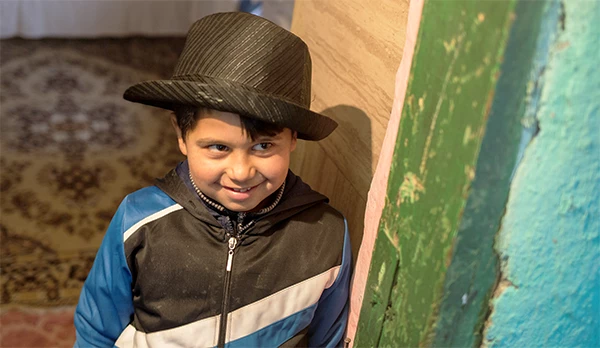
Eight years on from the start of the global economic crisis, close to one quarter of the European Union’s population remains at risk of poverty or social exclusion. But one group in particular stands out: Europe’s growing and marginalized Roma population.
The equivalent figure for Roma children stands at 85 percent in Central and Southeastern Europe. Living conditions of marginalized Roma in this region are often more akin to those in least developed countries than what we expect in Europe.
I have witnessed some of the striking inequalities and poverty that especially marginalized Roma children face first hand during a visit to Romania and Hungary last month. Lack of access to proper education and adequate living conditions indicate a lack of opportunities.
Roma children face “inherited” inequalities, transferred through poor living conditions from parent to child in a self-perpetuating cycle, and further strengthened by stereotypes and discrimination, or institutional or legal gaps. As a result, most Roma end up with lower skills, worse job prospects and poorer living standards than their fellow non-Roma citizens. And so the cycle continues.
As the World Bank has argued, poor opportunities faced by Roma children in Europe today not only poses an ethical dilemma, but will increasingly become an economic headache in the years ahead. In the countries of Central and Southeastern Europe working-age populations are shrinking because of aging, emigration, and low fertility rates, putting economic growth at risk.
In Romania, for example, the working age population is expected to shrink by 30 percent by 2050, while young Roma as a share of future labor market entrants across Central and Southeastern Europe are estimated at between 7-20 percent.
As the recent World Bank report “Being Fair, Faring Better: Promoting Equality of Opportunity for Marginalized Roma“ argues, giving equal access to proper education, healthcare and living conditions for marginalized Roma is therefore a smart economic choice.
What does it take to make a difference? Promoting nutrition and access to quality early childhood education, with a focus on the first 1,000 days of life, will go a long way to improve opportunities for Roma populations in Europe. Hungary, for example, has made extensive investments in early childhood education and care, starting at a very early age through the development of the Sure Start children’s houses countrywide, and various programs facilitating kindergarten enrollment and attendance.
A further step in promoting equal opportunities throughout the lifecycle includes making Central Europe’s education systems more equitable through systemic reforms such as those undertaken by Poland over the last two decades. Measures specifically targeted to disadvantaged children and youth are needed, too.
In Romania, I have recently witnessed successful examples of alternative education programs for children and mothers, implemented by the Policy Center for Roma and Minorities. The Second Chance Program has helped over 100 Roma adults get a qualification in mechanics. The program also supports tutoring for children who are falling behind in their studies.
Non-governmental organizations, such as the Roma Education Fund, have been working to address Roma inequalities with some promising results in early childhood education, such as the A Good Start program, or tertiary education scholarships for hard-working Roma students.
Countries in Central and Southeastern Europe can also go much further in developing intensive social work at the family and community level to ensure that a child has the proper food, clothes, ability and support to get to school and learn there. Romania is now taking steps in that direction, with World Bank support.
Social assistance cash transfers can be coupled with services that address the circumstances of the whole family, such as access to employment, decent living conditions and access to health services. Here countries in Central and Southeastern Europe can take inspiration from innovative interventions around the world, such as Chile’s Solidario program.
While the challenges in improving opportunities for Europe’s marginalized Roma remain stark, there is an increasing body of experience of what works and what does not. “Being Fair, Faring Better: Promoting Equality of Opportunity for Marginalized Roma“ has made a start in documenting emerging lessons, and the World Bank will continue to invest in improving the understanding of the impact of policies and interventions on opportunities for Roma over the coming years.
I am convinced that when provided with the right opportunities, disadvantaged children will thrive and contribute to social and economic life when they grow up. Our research shows that the aspirations of Roma parents for their children’s education are no different than those of non-Roma parents.
Now that is something to build on.


Join the Conversation